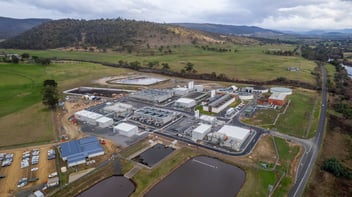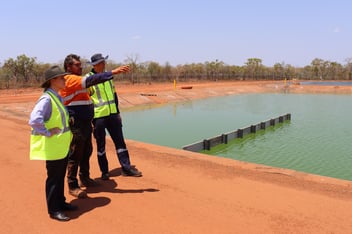Learning from the regions with the Charter Towers upgrade
Charters Towers is a regional mining, agriculture and education centre located approximately 133 km southwest of Townsville. Charters Towers is the regional marshalling centre for live cattle exports out of Townsville and is known as the education centre of the west, with a total of eight schools including three large private boarding schools.
Safe, secure and reliable water supplies are an essential resource for Charters Towers, not only for the health and wellbeing of the community, but also for providing a basis for encouraging and supporting Charters Towers’ economic growth and development.
In 2015 Charters Towers Regional Council commenced a program of works under the banner of the Water Infrastructure Upgrade Program. This program was valued at $17M and was funded 50:50 by Council and the Federal National Stronger Regions Fund.
A significant element of the program was the refurbishment of the FEJ Butcher Water Treatment Plant (WTP) that supplied potable water to the town since it was built in 1972. The treatment capacity was 22 ML/d and it used conventional surface water treatment processes of the era, which were coagulation, sedimentation, filtration and disinfection by chlorine. However, by 2015, the plant was not reliably maintaining treatment quality or throughput, thus necessitating an upgrade of the facility.
A tender was called for the refurbishment of the two existing treatment modules, repair of the treated water storage tank, installation of new chemical storage, and dosing systems and electrical upgrades at the WTP. The scope also included the replacement of the electrical system at the Weir Pump Station. Aquatec Maxcon submitted a conforming offer, but also two additional alternatives. The selected alternative involved the construction of new clarifiers and filters rather than the refurbishment of the old ones. Along with the opportunity to own new assets, this alternative meant that the majority of construction work could take place whilst the existing modules were online, thereby creating minimal disruption to the community.
Integration of the new plant elements was aided by a temporary re-circulation line added by Aquatec to enable the new clarifiers and filters to be commissioned as a separate process loop. Other parts of the upgrade did require significantly more integration management. The repair of the treated water storage tank required temporary tanks to be established and, due to the small temporary volume, very tight control of the treated water pumps. The new electrical switchboards at the weir pump station were installed with the old ones still in use, in what can only be described as a very tight space.
Construction commenced in mid-2018 and practical completion was awarded in March 2020. Challenges along the way included the 2019 monsoonal flood event during which a new record water height was recorded on the Weir Pump Station Tower. The performance proving and practical completion stages of the upgrade were performed in early 2019 during COVID-19 lockdowns and travel restrictions.
Charters Towers draws water from the Burdekin River which can deliver very high raw water turbidites very quickly. The new instrumentation across the plant gives the operators much better visibility of the process and the opportunity to stop the plant if the water goes out of specification at any stage. The biggest concern of the operators was the ability of the new clarifiers to handle the Burdekin mud. Their fears were allayed during a flood event in late 2020 during which the turbidity went from 2000 NTU to well over 10,000 NTU in the space of 2 hours. The plant was able to consistently produce potable water under 1 NTU.
Charters Towers was planning on refurbishing old equipment, but by taking an alternate offer, now have a plant that runs significantly better than the refurbished plant would have. By building new assets and by careful planning of outages during the integration, the residents of Charters Towers were not put under water restrictions at any time during the project. This is a significantly different outcome from what would have been required if they had proceeded with the requested refurbishment.


